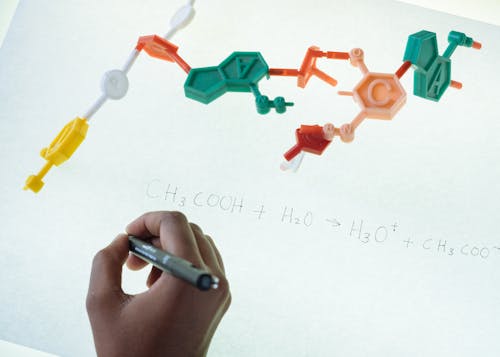ATOMIC STRUCTURE
KEY POINTS:
1. Auf-bau Principle:
The electrons should be filled in energy sub-levels in order of increasing energy values. The electrons are first placed in 1s, then 2s, then 2p, and so on.
2. Azimuthal Quantum number:
The azimuthal quantum number defines the shape of the orbital of an electron.
3. Balmer series:
A series of lines present in the visible region of the hydrogen spectrum is formed when an electron jumps from higher orbits to the 2nd orbit.
4. Bracket series:
A series of lines formed in the infrared region of the hydrogen spectrum when an electron jumps from higher orbits to the fourth orbit.
5. Cathode rays:
Negatively charged rays which originate from the cathode when electricity is passed through a gas at very low pressure.
6. Discharge Tube:
A glass tube containing a gas at low pressure and is provided with electrodes for the passage of electricity through the gas.
7. Heisenberg's uncertainty principle:
It is not possible to measure simultaneously the exact position and momentum of an electron in an atom.
8. Hund's Rule:
If degenerate orbital are present and more than one electrons are to be placed in them they should be placed in a separate orbital with the same spin rather than putting them in the same orbital with the opposite spin.
9. Lyman series:
A series of lines in the ultraviolet region of the hydrogen spectrum is obtained when an electron jumps from higher orbits to the first orbit of the hydrogen atom
10. Magnetic quantum number:
The magnetic quantum number defines the orientation of an orbital in a magnetic field.
11. Orbit:
An orbit is a definite path at a definite distance from the nucleus in which the electron revolves around the nucleus; actually, an orbit indicates an exact position or location of an electron in an atom.
12. Orbital:
A region around the nucleus where the probability of finding the electron is maximum. s,p,d, and f are different types of orbitals that exist in an atom.
13. Paschen series:
A series of lines in the infrared region of the hydrogen spectrum results from the transition of electrons from a higher orbit to the third orbit.
14. Pauli's exclusion principle:
According to this principle, it is impossible for two electrons residing in the same orbital of a poly electron atom, to have the same values of four quantum numbers. Thus two electrons in the same orbitals should have opposite spins.
15. Pfund series:
A series of lines in the infrared region of the hydrogen spectrum results from the transition of electrons from higher orbits to the fifth orbit.
16. Positive rays or canal rays:
Rays traveling in a direction opposite to the cathode rays in a discharge tube. They consist of positively charged ions formed by the ionization of gas molecules with the passage of cathode rays.
17. Principal quantum number:
The quantum number defines the shell of an electron in an atom. Its symbol is n.
18. Quantum Numbers:
These are the sets of numerical values which give the acceptable solutions.
19. Sigma bond:
A bond is formed by the linear overlap of atomic orbitals.
20. Spectrum:
A band of seven colors is formed by the dispersion of the components of white light when it is passed through a prism.
Tags
Atomic Structure

